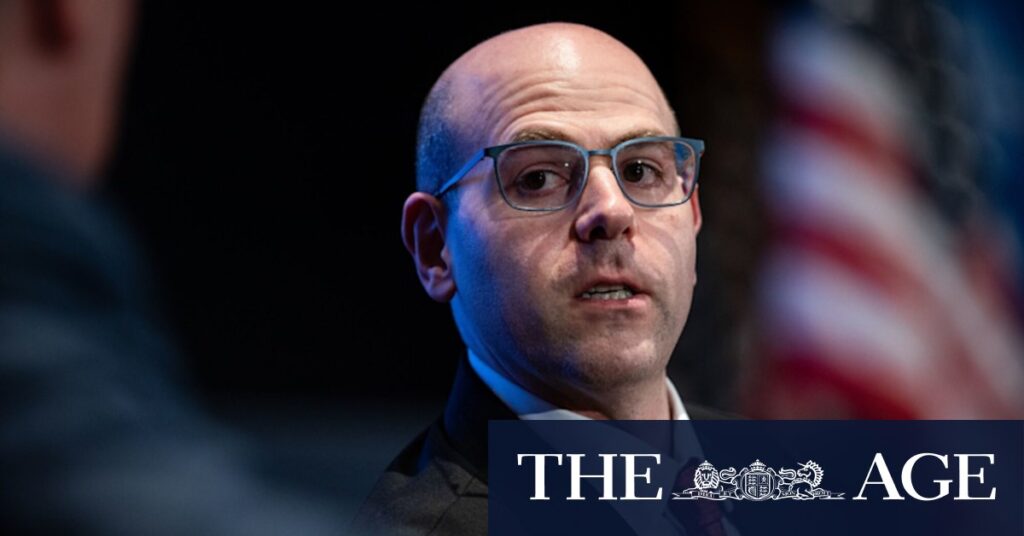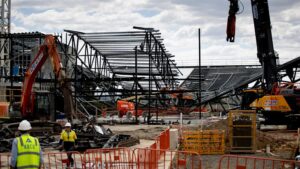
The Federal Reserve has reduced its key interest rate by a quarter-point, marking its first cut since December, as concerns mount over the health of the U.S. labor market. The central bank also signaled plans for two additional cuts this year, lowering the short-term rate to approximately 4.1 percent from 4.3 percent.
The decision, led by Fed Chair Jerome Powell, reflects a shift in focus from inflation to employment, as recent months have seen a slowdown in hiring and a slight increase in the unemployment rate. Powell emphasized the growing risks to employment during a press conference following the Fed’s two-day meeting.
Economic Context and Policy Shifts
Previously, the Federal Reserve had maintained its rate unchanged throughout the year, assessing the impacts of tariffs, stricter immigration policies, and other measures from the Trump administration on inflation and economic growth. However, the current economic landscape has prompted a reevaluation of priorities.
Despite inflation remaining modestly above the Fed’s 2 percent target, the central bank’s attention has pivoted to the labor market. Lower interest rates are expected to reduce borrowing costs for mortgages, car loans, and business loans, potentially stimulating growth and employment.
Market Reactions and Projections
Fed officials have indicated expectations for two more rate cuts this year, but only one in 2026, which may not align with Wall Street’s anticipations. Investors had projected five cuts for the remainder of the year and into the next.
Stephen Miran, a recent appointee by President Donald Trump, was the sole dissenter in the decision. His appointment, confirmed by the Senate in a hurried vote, underscores the political dynamics influencing the Fed’s decisions. Despite expectations for more dissent, Powell managed to unify the committee, which includes other Trump appointees and Fed Governor Lisa Cook, whom Trump is attempting to remove.
Internal Divisions and Economic Uncertainty
Significant differences persist among the 19 officials on the Fed’s rate-setting committee. While seven policymakers oppose further cuts, two support one more, and ten favor at least two additional reductions. One official, likely Miran, advocates for substantial cuts to bring the rate to 2.9 percent by year-end.
Powell acknowledged the uncertainty surrounding the economic outlook, noting that inflation remains stubborn even as hiring falters. He remarked,
“There are no risk-free paths now. It’s not incredibly obvious what to do.”
Challenges to Fed Independence
The Fed is navigating a challenging economic environment alongside threats to its traditional independence from political influence. Inflation, which rose 2.9 percent in August from a year ago, remains elevated, defying typical patterns where a slowing economy cools price increases.
Trump’s attempt to fire Cook marks an unprecedented challenge to the Fed’s autonomy. Legal scholars view this as an attack on the institution’s independence, with Trump’s administration accusing Cook of mortgage fraud amid broader criticisms of Powell and the Fed for not implementing faster rate cuts.
Looking Ahead
An appeals court recently upheld a ruling that Trump’s firing of Cook violated due process rights, reinforcing the legal protections around Fed governance. Meanwhile, the Senate’s approval of Miran’s nomination adds a new dynamic to the committee’s composition.
President Trump has publicly urged the Fed to heed his advice on rate cuts, suggesting a reduction by three full percentage points. However, Powell maintains confidence in the Fed’s independence, stating,
“I don’t believe we’ll ever get to that place. We’re doing our work exactly as we always have now.”
As the Fed navigates these complex challenges, most officials project the central bank’s key rate to range between 3.5 percent and 3.75 percent by year-end. Miran, however, forecasts a rate between 2.75 percent and 3.0 percent, highlighting the ongoing debate within the institution.







